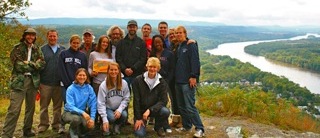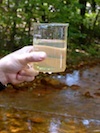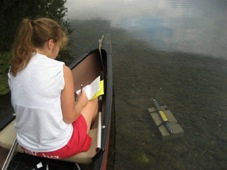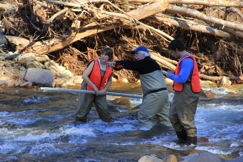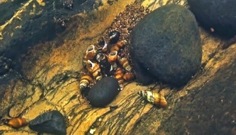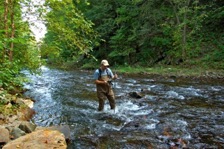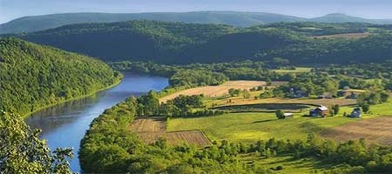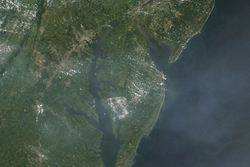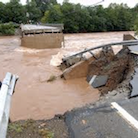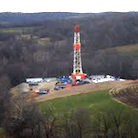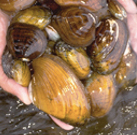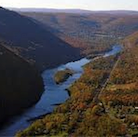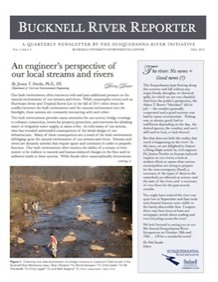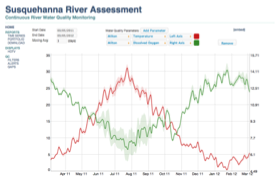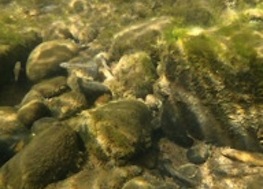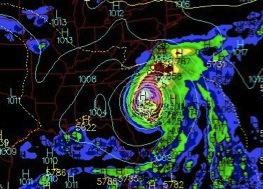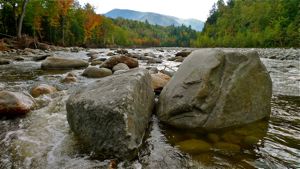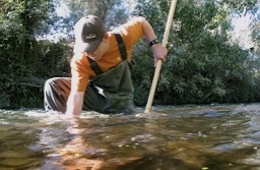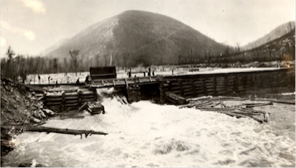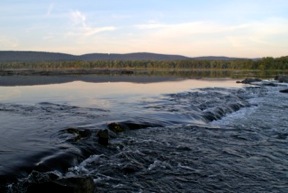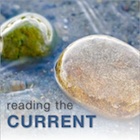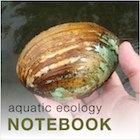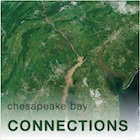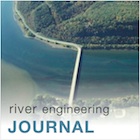
new teaching
Bucknell on the Susquehanna
May 14 - June 3, 2012. A field-based sojourn on the Susquehanna RIver and its fascinating watershed, from its glaciated headwater regions to its mouth at the Atlantic Oceon at the Chesapeake Bay, the largest estuary in the United States. Travel across the country to explore the Cascades, Olympic Peninsula, and the Puget Sound, the second largest estuary. Compare and contrast the cultures, history, landforms, ecology, and environmental issues facing these two important regions of the world.
FOLLOW US
![]()
social media
@susquehannariver
On Facebook
@SusquehannaRivr
On Twitter

Susquehanna-River-Initiative
On Tumblr
Macroinvertebrate communities and the riverscape
Matt Wilson, a biology graduate student, and professor Matthew McTammany are mapping the variations in mayfly, caddisfly, and other macroinvertebrates in various habitat settings in the Susquehanna River.
Matt Wilson, a biology graduate student, and professor Matthew McTammany are mapping the variations in mayfly, caddisfly, and other macroinvertebrates in various habitat settings in the Susquehanna River.
new research
current projects
Monitoring the water quality of the Susquehanna River
Several multi-parameter water quality sondes have been installed in the Susquehanna River to continuously measure water depth, temperature, dissolved oxygen, pH, total dissolved solids, and chlorophyll. Advanced software has been written to stream this data to the web.
Several multi-parameter water quality sondes have been installed in the Susquehanna River to continuously measure water depth, temperature, dissolved oxygen, pH, total dissolved solids, and chlorophyll. Advanced software has been written to stream this data to the web.
Miller Run stream restoration: improving ecology and hydrology on Bucknell campus
River Initiative faculty have been studying ways to improve the aesthetics and ecology of Miller Run, a highly degraded and channelized stream that flows the length of Bucknell campus.
Ecology, hydrologic, geomorphic, and recreational aspects of the project are being looked at carefully. Working with Bucknell Facilities, the Golf Course, PA DEP, and the U.S. Fish and Wildlife Service, the actual construction of the storm water wetlands and reconstruction of the fluvial network is scheduled to begin in Fall 2013.
River Initiative faculty have been studying ways to improve the aesthetics and ecology of Miller Run, a highly degraded and channelized stream that flows the length of Bucknell campus.
Ecology, hydrologic, geomorphic, and recreational aspects of the project are being looked at carefully. Working with Bucknell Facilities, the Golf Course, PA DEP, and the U.S. Fish and Wildlife Service, the actual construction of the storm water wetlands and reconstruction of the fluvial network is scheduled to begin in Fall 2013.
Flow hydraulics, sediment transport, and bedforms of the Susquehanna River
Dr. Jessica T. Newlin, professor of Civil and Environmental Engineering is collaborating with Dr. Benjamin R. Hayes on a study of flow hydraulics and bedforms of the West Branch of the Susquehanna River.
Dr. Jessica T. Newlin, professor of Civil and Environmental Engineering is collaborating with Dr. Benjamin R. Hayes on a study of flow hydraulics and bedforms of the West Branch of the Susquehanna River.
Freshwater mussel communities on the West Branch Susquehanna River
Sean Reese, aquatic biologist with the Susquehanna River Initiative has begun the first comprehensive assessments of benthic mussel communities in the Susquehanna River near Milton, PA.
Sean Reese, aquatic biologist with the Susquehanna River Initiative has begun the first comprehensive assessments of benthic mussel communities in the Susquehanna River near Milton, PA.
latest news
The Fall 2013 issue of our quarterly newsletter is now available.
water quality (live!)
river flow (live!)
most popular
Who we are
• A team of over 25 faculty and 50 students collaborating on teaching, research, and outreach endeavors in the Susquehanna watershed.
• Instrumented field research facilties - both in the river, gravel bed tributaries (White Deer Creek, Lycoming, Loyalsock, ad Muncy Creeks), wetlands (Montandon), forested lake/stream/wetlands (Roaring Creek), and agricultural areas (Buffalo Creek);
• Instrumented field research facilties - both in the river, gravel bed tributaries (White Deer Creek, Lycoming, Loyalsock, ad Muncy Creeks), wetlands (Montandon), forested lake/stream/wetlands (Roaring Creek), and agricultural areas (Buffalo Creek);
Contact us
Susquehanna River Initiative
Environmental Center
Bucknell University
Lewisburg, PA 17837
Telephone: (570) 577-1830
Email: susquehanna.river.intitiative@bucknell.edu
Environmental Center
Bucknell University
Lewisburg, PA 17837
Telephone: (570) 577-1830
Email: susquehanna.river.intitiative@bucknell.edu
What we do
• Revamp existing courses or develop entirely new courses that incorporate the local Susquehanna watershed as a context for learning.
• Collaborate on research in the watershed, including air, water, and soil/rocks.
• Collaborate on research in the watershed, including air, water, and soil/rocks.

